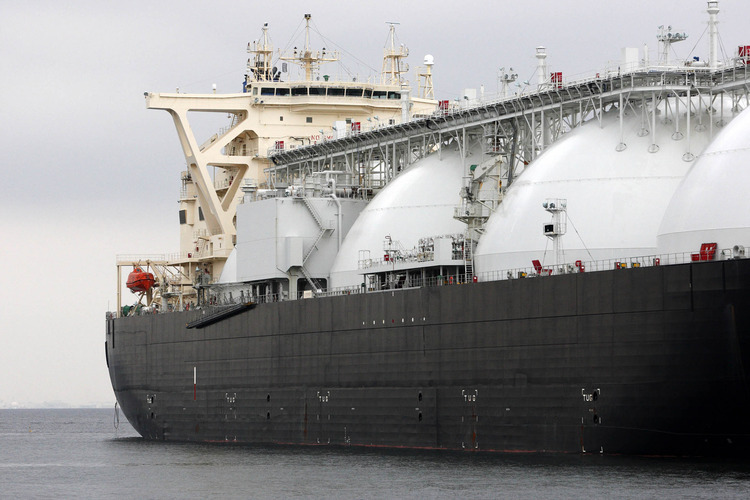
One of the stodgier corners of the energy industry is getting more relaxed.
Liquefied natural gas sellers, which once did business almost entirely on long-term, oil-linked contracts, are offering shorter deals, more pricing options, unrestricted shipping terms and in some cases are even willing to invest in the infrastructure their buyers need to import the super-chilled fuel.
“In the past we could just produce LNG and sell it to power generators,” Jean-Pierre Mateille, vice president of trading for Total Gas & Power said Thursday at the Platts LNG & Natural Gas Markets Asia conference in Singapore. “Today this is not enough. You have to invest in downstream projects in order to secure demand.”
Prompting this shift in philosophy is a glut of production capacity coming online from Australia to the U.S. that has driven down spot prices by about 70 percent since February 2014. With LNG in abundant supply, buyers have a stronger hand in contract negotiations and are balking at signing the kinds of deals that have traditionally underpinned projects. No company has sanctioned a major new green-field LNG development since late 2013.
Energy giants are hoping more amenable terms will entice customers to sign up for supplies, guaranteeing future cash flow to finance multi-billion liquefaction plants. Failure to do so could mean that demand growth eats through the supply glut and creates scarcity and higher prices in the next decade, according to Bloomberg New Energy Finance.
In the future, banks may be able to finance projects based on a combination of shorter contracts and an understanding that producers will be able to sell cargoes through spot deals as LNG markets becomes more liquid, said Luca Tonello, deputy general manager and head of project finance for Asia investment banking at Sumitomo Mitsui Banking Corp. At the moment, banks still require traditional long-term deals, he said.
“It’s very challenging for a green-field project,” said Gonzalo Cabrera, general manager for LNG economics and markets analysis at Anadarko Petroleum Corp., which is developing a new LNG plant in Mozambique. “Some of us at the office are taking boxing classes during lunch time, and we joke on the way back that now we’re ready to negotiate with our customers. That’s how tough it is.”
Gas Hedging
Anadarko is listening to potential customers when they push for prices that aren’t linked to oil, Cabrera said. Several price indices are vying to become an Asian LNG benchmark, such as Platts’ Japan-Korea Marker and Singapore Exchange Ltd.’s Sling Index.
In 2000, 98 percent of LNG was sold at prices tied to oil. By 2025, that will fall to 61 percent, according to Cheniere Energy Inc. New volumes from the U.S. are tied to Henry Hub gas prices, with other contracts linked to European gas.
Tellurian Inc., which is developing a proposed LNG plant in Louisiana, has floated the possibility of selling LNG at a flat price of $8 per million British thermal units for five years.
A U.S. plant that’s already operating could use natural gas futures to hedge sales five to six years out and offer flat prices, Scott Chrisman, vice president for LNG and midstream commercial and development at Sempra Energy. Liquidity in the futures market dries up after that, and bilateral hedging with a bank or a trading house would become prohibitively expensive.
The emergence of the U.S. as an LNG exporting power is not only connecting Henry Hub to global prices, it’s also adding destination flexibility. Unlike contracts that require LNG to be delivered to a specific port, U.S. LNG can be sent anywhere once it’s loaded on tankers, to the delight of buyers like Japan’s Jera Inc., which said destination restrictions impinge on its ability to re-sell cargoes it doesn’t need.
Sharing Pizza
“It’s like if you go to the pizzeria and buy a pizza, and the shop owner orders that you have to eat the pizza at home by yourself,” Kazuhiro Yokoi, the company’s vice president for fuel transactions, said at the conference. “Sometimes we want to share with our families, sometimes we’re full so we want to give a slice to someone else. This is the feeling LNG buyers have.”
Total and Royal Dutch Shell Plc are among companies investing in a floating LNG import terminal in the Ivory Coast in order to secure a new market that could buy 2 million tons of LNG a year. Cheniere is also investing in a LNG import project in Chile.
Cheniere, which is operating or building seven liquefaction trains in Louisiana and Texas, is trying to find buyers to finance the construction of two more that are already permitted. Douglas Wharton, Cheniere’s director of origination, said the company is offering more flexibility in terms of contract length after signing 20-year deals on the first seven.
“The traditional 20-year contract is not set in stone by any means,” Wharton said in an interview at the conference. “The challenge is finding a balance between what length of contracts buyers are willing to sign into what terms banks are willing to accept.”
Recommended for you
